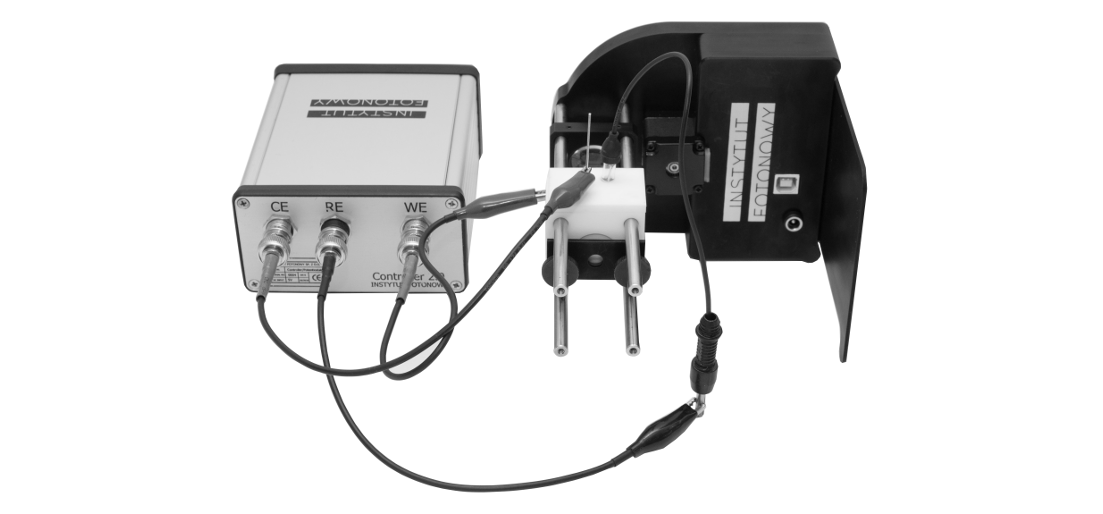Mini Photoelectric Spectrometer for photoelectric properties examination
Couldn't load pickup availability
Delivery and Shipping to EU
Delivery and Shipping to EU
We will add in the quotation, the shipping, insurance, customs clearance costs.
Mini Photoelectric Spectrometer for photoelectric properties examination
Instytut Fotonowy
Description
Mini Photoelectric Spectrometer setup allows to apply various measurement techniques: chronoamperometry, voltammetry, cyclic voltammetry and the light intensity modulated photocurrent/photovoltage. Those techniques enables to examine the photoelectric dynamics of the sample. Samples may be investigated using two- or three-electrodes configuration.
Quantities measured by the instrument:
I-V characteristics of a sample under illumination,
Open Circuit Potential (OCP) as a function of light wavelength,
Photocurrent as a function of light intensity,
IPCE or EQE at wavelengths provided by the LED Revolver,
Surface Photovoltage (SPV),
Space Charge Region capacitance if a super-bandgap wavelength LED is present in the LED Revolver.
Measurement techniques:
Chronoamperometry,
Voltammetry,
Cyclic voltammetry,
Chopped illuminance and more

Specifications
LED Revolver
10 LED slots,
Default LED set: 365 nm, 385 nm, 405 nm, 450 nm, 520 nm, 590 nm, 630 nm, 740 nm, 840 nm, white (3000 K),
Custom LED selection available,
Typical electric power of LEDs: 3W,
Light intensity modulation: square, sinusoidal, triangle or ramp waveform with adjustable amplitude and bias light intensity,
Light modulation frequency range: 1 µHz ÷ 10 kHz,
Potentiostat
Bias potential range: -5 V ÷ 5 V,
Current ranges: 10 nA, 100 nA, 1 µA, 10 µA, 100 µA, 1 mA, 10 mA,
Current resolution: from 1 pA to 100 nA (range dependent),
Controller
Maximum sampling rate: 1 kSample/s,
Connection with PC: via USB 2.0,
Electrochemical cuvette
Adapted for transparent and opaque samples,
Sample may be illuminated through the electrolyte or through the rear optical window,
PTFE container for electrolyte,
Reference electrode: Ag/AgCl,
Counter electrode: Pt.
The instrument may be extended with the Sample Chamber to screen the ambient light and electromagnetic fields.



